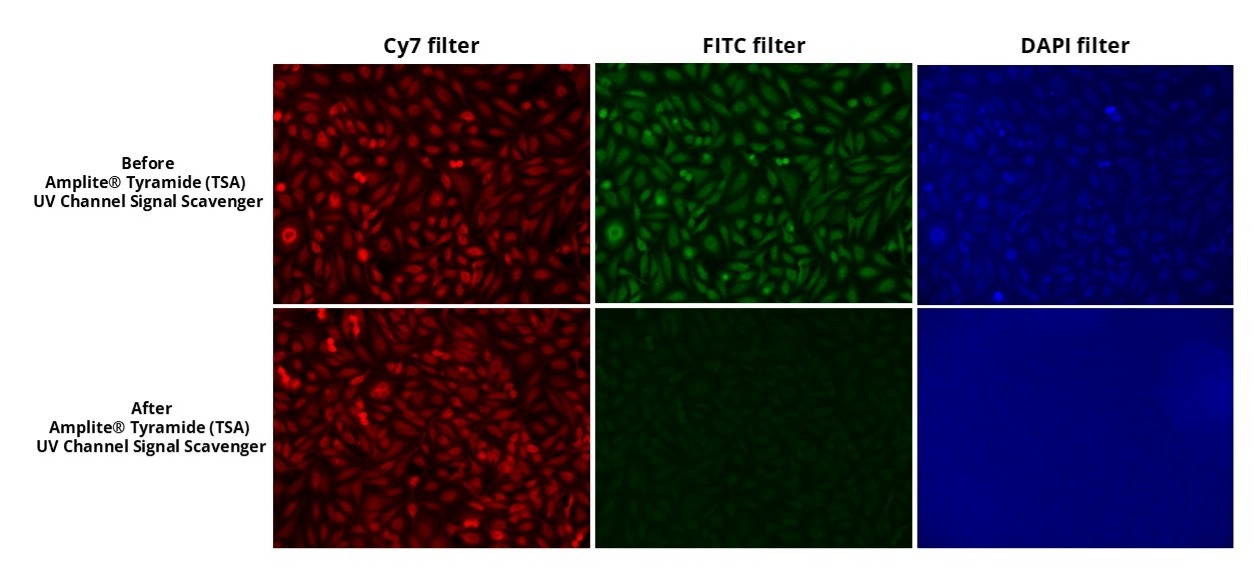Amplite® Tyramide (TSA) UV Channel Signal Scavenger
10X
Tyramide signal amplification (TSA) is a technique used to enhance the signal of target molecules, such as antibodies or nucleic acid probes. This technique is particularly useful when working with samples that have low levels of target molecules or weak signals. TSA works by utilizing the enzymatic activity of horseradish peroxidase (HRP), which can catalyze the deposition of labeled tyramide molecules in close proximity to the target molecules. The tyramide molecules contain a reporter group, such as a fluorescent dye, which generates a detectable signal upon enzymatic reaction. This localized deposition of labeled tyramide molecules leads to signal amplification at the site of the target molecules, making them more easily detectable. Recently multicolor TSA detections are increasingly used for complicated detections, e.g., cancer diagnostics. There are a number of fluorescent tyramides available for TSA applications. However, some of the long wavelength tyramide conjugates tend to leak to UV (e.g., DAPI) and green (FITC) channel. This phenomenon is particularly severe with NIR or infrared tyramide or styramide conjugates. Amplite® Tyramide (TSA) UV Channel Signal Scavenger is used to quench the leaked fluorescence of UV (DAPI) and green (FITC) channel to eliminate or reduce the background resulted from the leakage of with NIR or infrared tyramide or styramide conjugates.


| Catalog | Size | Price | Quantity |
|---|---|---|---|
| 44500 | 1000 Slides | Price |
Physical properties
| Solvent | Water |
Storage, safety and handling
| H-phrase | H303, H313, H333 |
| Hazard symbol | XN |
| Intended use | Research Use Only (RUO) |
| R-phrase | R20, R21, R22 |
| Storage | Freeze (< -15 °C); Minimize light exposure |
Documents
Contact us
| Telephone | |
| Fax | |
| sales@aatbio.com | |
| International | See distributors |
| Bulk request | Inquire |
| Custom size | Inquire |
| Technical Support | Contact us |
| Request quotation | Request |
| Purchase order | Send to sales@aatbio.com |
| Shipping | Standard overnight for United States, inquire for international |
Page updated on November 20, 2025
